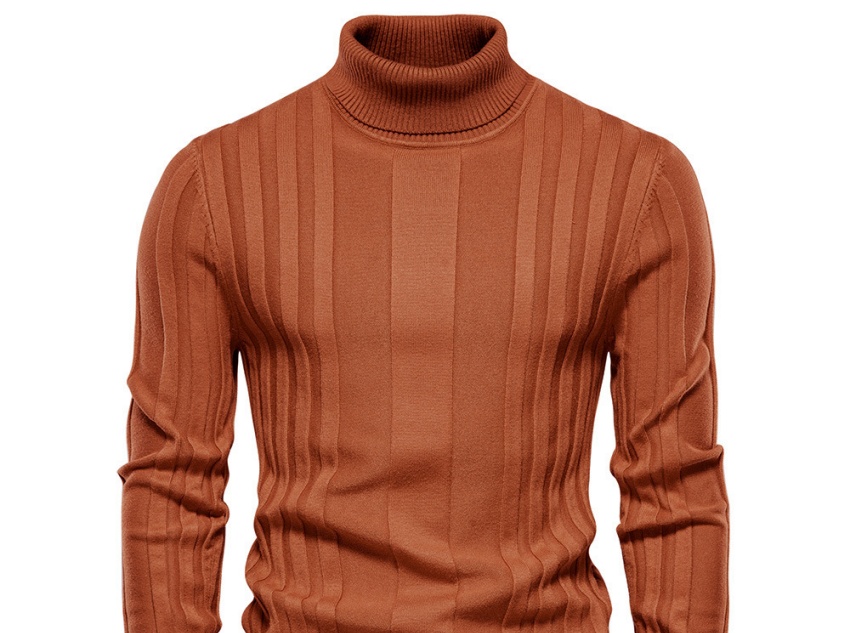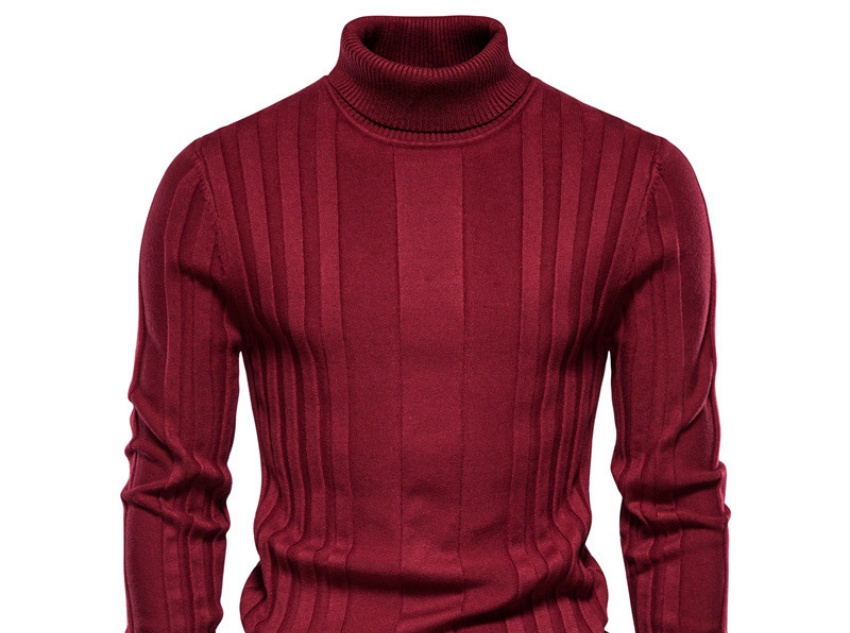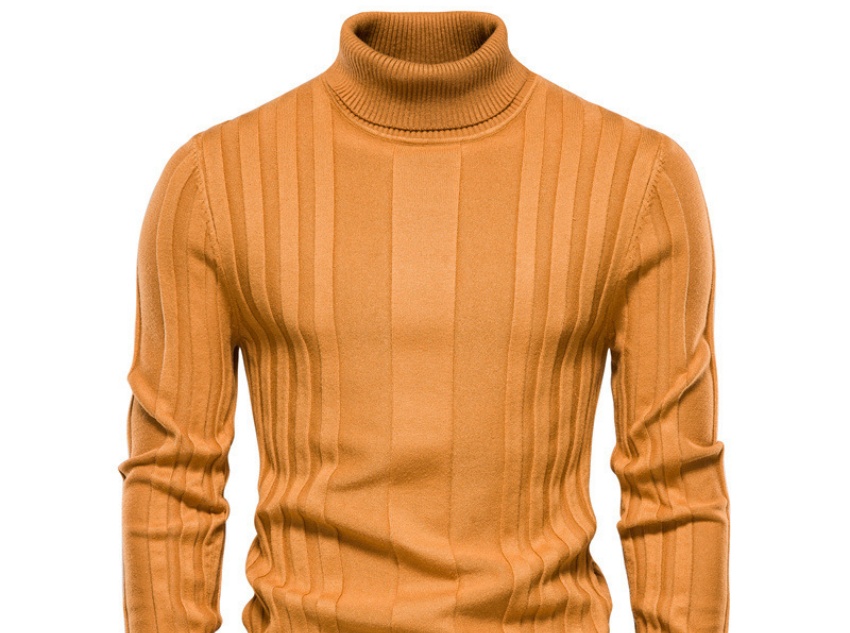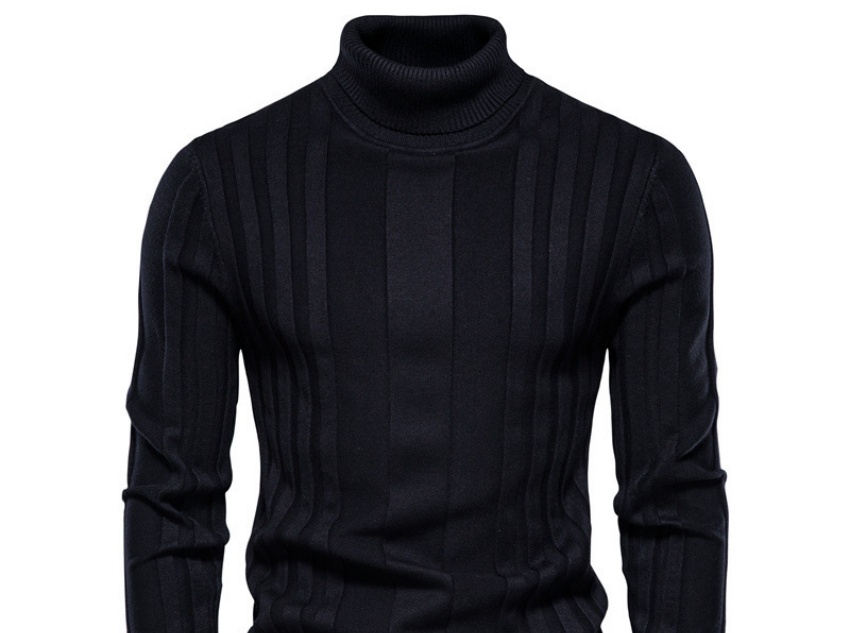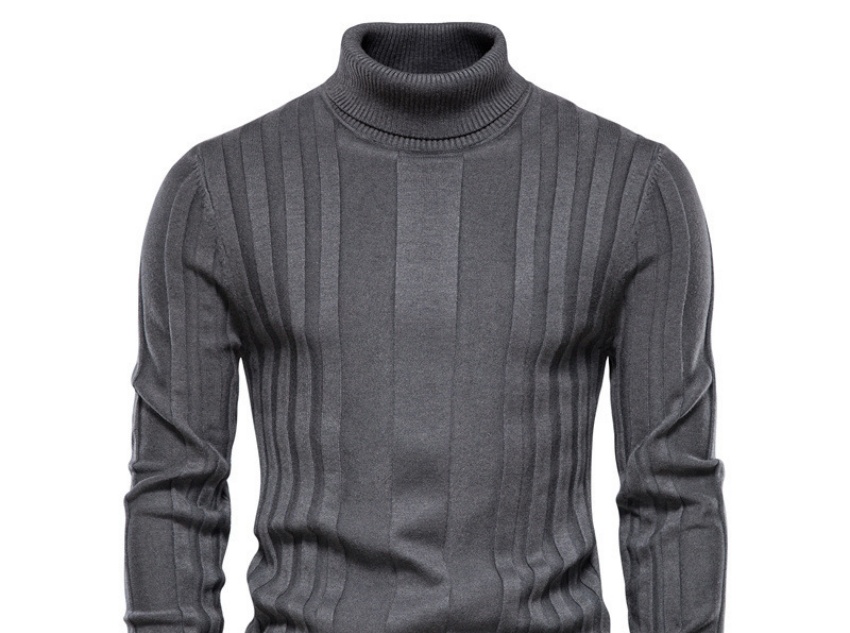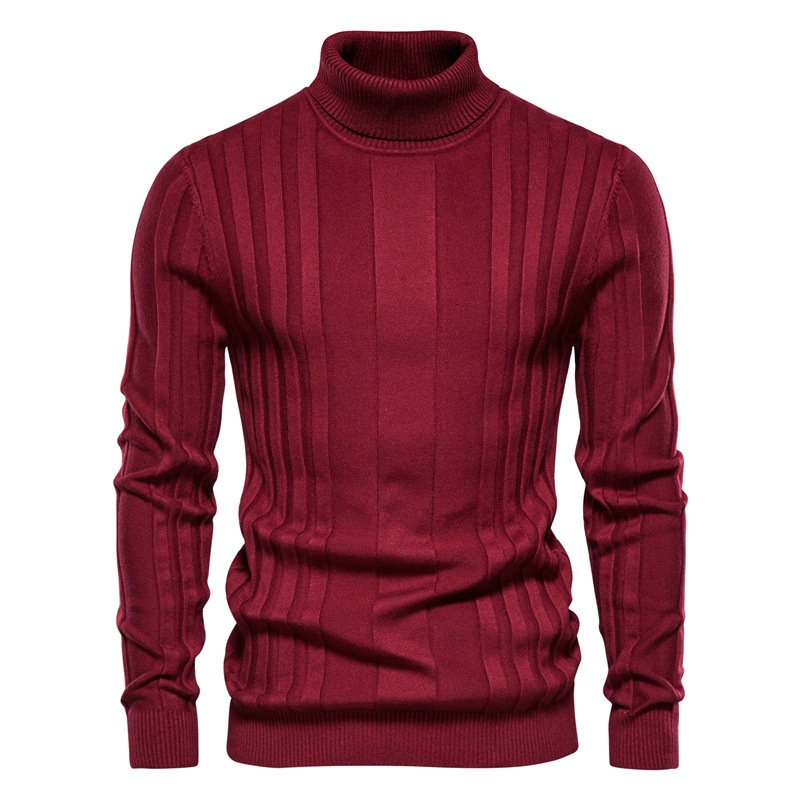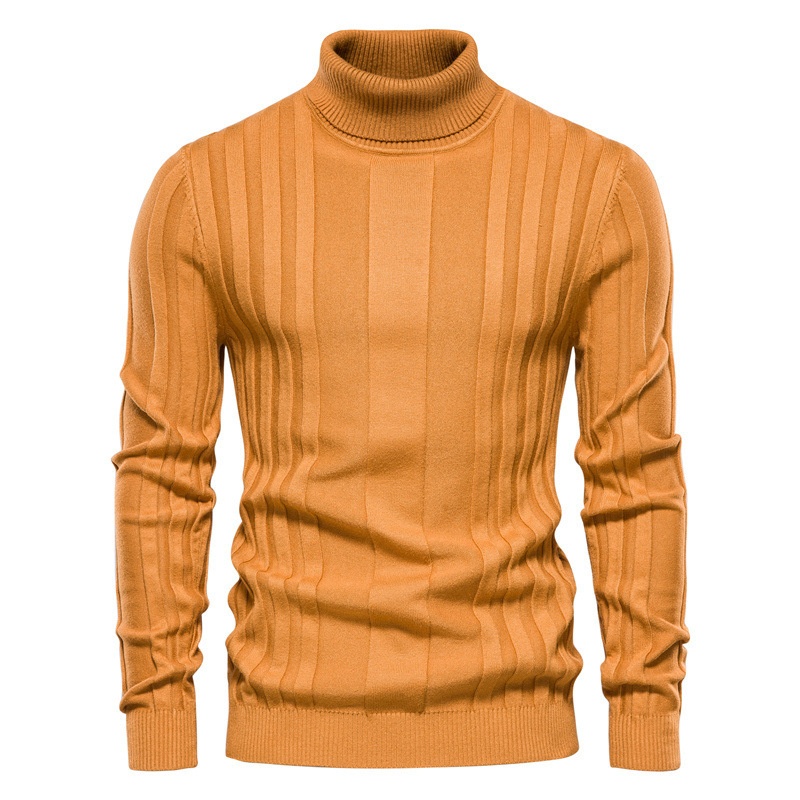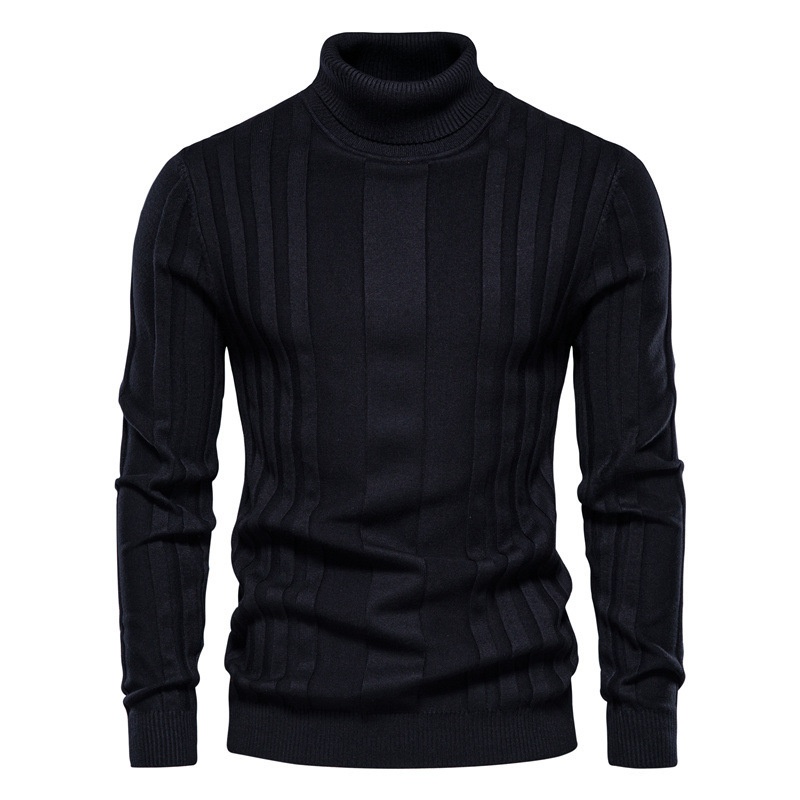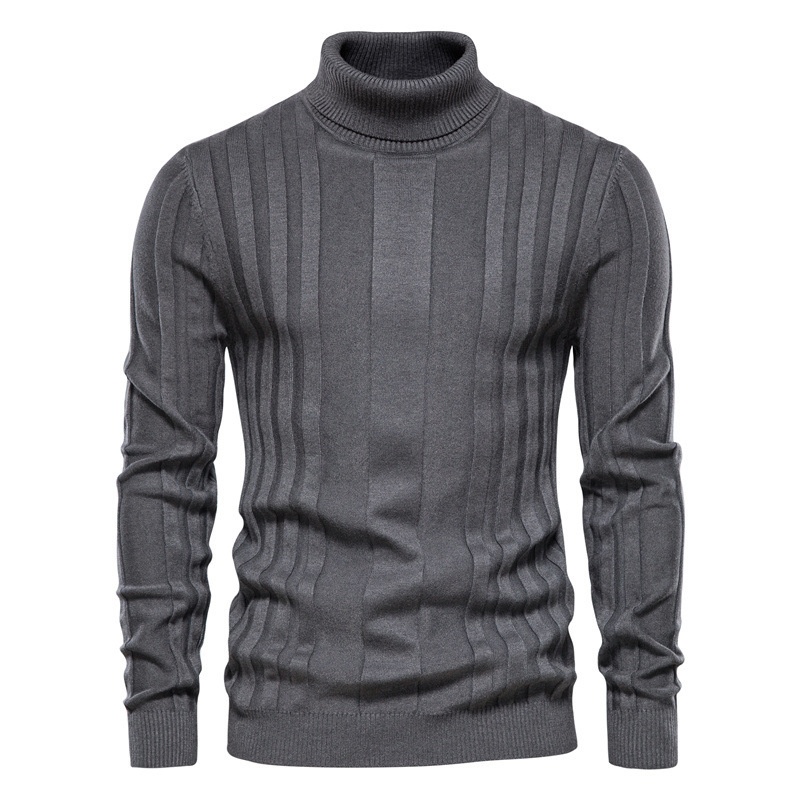The picture shows a basic high-neck men’s sweater: craftsmanship and texture aesthetics under a simple version.
This men’s sweater is based on a high-neck slim style, continuing the warmth-keeping functionality of the classic high-neck design, while incorporating the pursuit of lines in modern aesthetics. The high collar fits the neck curve to form a natural enclosure, which not only blocks the cold wind, but also serves as the “starting point” for the dressing level – it can be worn alone to show a neat outline, or as an inner layer to provide delicate base support for coats, suits and other outerwear.
The overall tight-fitting slightly elastic version is adopted, the shoulder line transitions naturally, and the body of the clothes shows a smooth convergence trend from the chest to the hem, accurately outlining the male body contour without being tight, while showing the body line, retaining the stretch space for daily activities. The long-sleeved design completely covers the arms, and the cuffs echo the hem, creating a coherent wrapping feeling of “upper – middle – lower”, which is suitable for the needs of wearing in multiple scenes in autumn and winter.
The sweater is made of composite weaving technology – the main area is interwoven with plain weave and pit strips. The large area of plain weave ensures the flatness and lightness of the fabric foundation, while the regularly distributed ribs are the key to breaking the monotony and enhancing functionality.
During the weaving process, the needle arrangement and tension must be strictly controlled: the needle spacing in the plain area is uniform (about 8-10 needles per inch) to ensure a fine surface texture; the rib area forms a longitudinal concave and convex texture by adjusting the “up and down” cycle density of the needles (such as 2×2 or 3×3 ribs), and at the same time, with the help of stable tension, the ribs and plain weave are naturally connected to avoid fabric deformation and texture dislocation.
The high collar part uses rib weaving technology to construct an elastic rib texture with a tight “up and down” (1×1 rib) weaving method. This process gives the neckline excellent elasticity, which can not only fit the neck tightly to keep warm, but also adapt to different neck circumferences, and is smooth to put on and take off without jamming.
The cuffs and hems are also ribbed, and the number of needles is increased during knitting (compared to the main plain weave, the number of needles is increased by about 20% – 30%) to make the edges tighter. On the one hand, it strengthens the warmth-keeping effect and prevents heat from escaping from the cuffs and hems; on the other hand, it fixes the edge shape, and even with frequent activities or washing, it can maintain a “slightly gathered” neat appearance to avoid loose deformation and damage to the overall shape.
The plain weave and the ribbed strips in the main area are interwoven to form a “hidden and visible” texture level: the plain weave part is like a delicate “surface”, showing a soft luster under the light, laying a simple tone for the sweater; the ribbed strips are like vertical “lines”, regularly distributed on the body (mostly concentrated on both sides of the chest and the shoulder extension line), breaking the monotony through concave and convex changes and adding a visual three-dimensional sense.
This texture layout is not random, but follows the balance of ergonomics and aesthetics. The ribs are distributed along the muscle lines of the body, visually strengthening the three-dimensional sense of the chest and shoulders, making the wearer’s figure more upright. At the same time, the vertical ribs have a visual “lengthening” effect, optimizing the body proportions and making the overall shape more slender.
The ribbed ribs on the high collar, cuffs, and hem are a unity of function and aesthetics. The vertical rib texture (1×1 rib presents a regular line of “one convex and one concave”) injects details into the simple design: from a distance, the ribs make the edge more contoured, different from the smoothness of the main plain weave; from a close distance, the elastic coil structure of the ribs is clearly visible, showing the fineness of the craftsmanship.
The elasticity of the ribbed ribs adapts to the body’s dynamics. When the hand is raised, the cuff ribs stretch and contract with the arm, always fitting without displacement; when the neck turns, the high collar ribs are flexibly wrapped, keeping warm and comfortable. This “dynamic adaptation” allows basic sweaters to get rid of the “stereotype” and show the design ingenuity in practicality.
The core charm of this sweater lies in the extreme polishing of the basic style – using simple styles to carry multiple crafts, so that “basic” does not mean “simple”. It can become an “invisible hero” in business scenes: paired with suit pants and windbreakers, the exquisite sense of the high collar enhances the style, and the ribbed texture injects details into the simple outfit; it can also be transformed into a “styling weapon” for casual occasions: paired with jeans and work boots, the slim version shows a neat aura, and the interweaving of plain and ribbed balances toughness and delicacy.
In terms of process logic, it perfectly combines the simplicity of plain, the three-dimensionality of ribbed, and the practicality of ribbing. Through the precise control of knitting details (needle spacing, tension, texture distribution), a basic high-necked sweater has the composite attributes of “durable, versatile, comfortable, and shaping”. This is exactly the design philosophy of the basic style – in the simplest form, it carries the widest range of wearing needs, becomes an “evergreen item” in the four seasons, interprets the fashion essence of “less is more”, and uses the subtle differences in craftsmanship and texture to build a dressing foundation for men.
